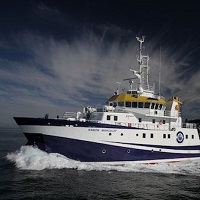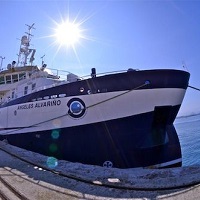Keyword
Bacteria non taxonomy-related biomass expressed as carbon per unit volume of the water column
62 record(s)
Type of resources
Categories
Topics
INSPIRE themes
Keywords
Contact for the resource
Provided by
Years
Formats
Status
-

The fertilization of phytoplankton by the Iberian upwelling is responsible for the production of ∼250,000 t year-1 of blue mussels in the Galician Rías. This amount represents 95% of the Spanish and 50% of the European production, respectively. This production is jeopardized every year by species from the genera Dinophysis and Pseudo-nitzschia, responsible for lengthy shellfish harvesting closures due to accumulation of diarrhetic (DSP) and amnesic (ASP) shellfish poisoning toxins, respectively, above regulatory levels. Previous studies in this region and others in Europe indicate that these species frequently aggregate forming “thin layers”. Less than five meters thick and up to several km in horizontal extension, these layers have important implications for the management of molluscan shellfish safety. Despite this, the frequency of occurrence of thin phytoplankton layers in the Galician Rías, and the role of mixing conditions in their formation and persistence remains unknown. This project combines field observations in the Galician Rías, time series analysis, and empirical and numerical modeling with the aim of 1) investigating the role of mixing on resource availability and phytoplankton bloom initiation, maintenance and dissipation, 2) describing the frequency and spatial distribution of thin layers of phytoplankton (TLP), and 3) investigating the mechanisms responsible for the formation of TLP.
-

The objective of the project RADIALES, started in 1990, aims at “understanding and modelling the response of the marine ecosystem to the sources of temporal variability in oceanographic and planktonic components, focusing on those factors and processes affecting biological production and potentially altering the ecosystem services”. This project is the oldest multidisciplinary ocean observation initiative still active in Spain.
-

Acoustic estimation of abundance of juvenile anchovy in the Bay of Biscay.
-

The objective of the project RADIALES, started in 1990, aims at “understanding and modelling the response of the marine ecosystem to the sources of temporal variability in oceanographic and planktonic components, focusing on those factors and processes affecting biological production and potentially altering the ecosystem services”. This project is the oldest multidisciplinary ocean observation initiative still active in Spain.
-

Acoustic estimation of abundance of juvenile anchovy in the Bay of Biscay.
-

The objective of the project RADIALES, started in 1990, aims at “understanding and modelling the response of the marine ecosystem to the sources of temporal variability in oceanographic and planktonic components, focusing on those factors and processes affecting biological production and potentially altering the ecosystem services”. This project is the oldest multidisciplinary ocean observation initiative still active in Spain.
-

Acoustic estimation of abundance of juvenile anchovy in the Bay of Biscay.
-

The objective of the project RADIALES, started in 1990, aims at “understanding and modelling the response of the marine ecosystem to the sources of temporal variability in oceanographic and planktonic components, focusing on those factors and processes affecting biological production and potentially altering the ecosystem services”. This project is the oldest multidisciplinary ocean observation initiative still active in Spain.
-

The objective of the project RADIALES, started in 1990, aims at “understanding and modelling the response of the marine ecosystem to the sources of temporal variability in oceanographic and planktonic components, focusing on those factors and processes affecting biological production and potentially altering the ecosystem services”. This project is the oldest multidisciplinary ocean observation initiative still active in Spain.
-

The objective of the project RADIALES, started in 1990, aims at “understanding and modelling the response of the marine ecosystem to the sources of temporal variability in oceanographic and planktonic components, focusing on those factors and processes affecting biological production and potentially altering the ecosystem services”. This project is the oldest multidisciplinary ocean observation initiative still active in Spain.
 Catálogo de datos del IEO
Catálogo de datos del IEO